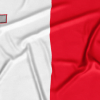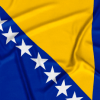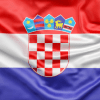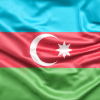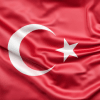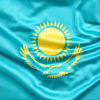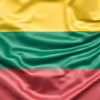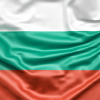About Lithuania

Lithuania, together with Estonia and Latvia, forms the trio of Baltic states.
Square – 65,300 km².
Population – 2,867,725 people.
The capital – Vilnius.
The national language – Lithuanian. The English language is commonly spoken by the local population and finds active usage in the realms of business and tourism.
Lithuania is divided into 10 counties – Vilnius, Kaunas, KlaipÄ—da, Panevėžys, Å iauliai, Alytus, BirÅ¡tonas, Palagna, Visaginas, Neringa. Counties are subdivided into a total of 60 local administrative units – 43 municipalities and 17 state cities.
Lithuania shares its borders with Latvia in the north, Belarus to the east and south, Poland to the south, and Russia to the southwest. It has a maritime boundary with Sweden to the west.
Culture

Lithuania, situated in Northern Europe, boasts a culturally rich history influenced by its Baltic, Slavic, and Western European heritage. Traditional Lithuanian culture is deeply connected to nature, with folk songs and dances often celebrating the country’s picturesque landscapes and changing seasons. Traditional Lithuanian attire draws inspiration from nature, featuring motifs of flowers, trees, and animals. Lithuanian cuisine is renowned for its hearty and flavorsome dishes, including specialties like cepelinai (dumplings filled with meat or cheese), Å¡altibarÅ¡Äiai (cold beetroot soup), and kugelis (potato pudding). The cuisine emphasizes the use of fresh, seasonal ingredients. While Lithuanian culture continually evolves, it remains firmly grounded in its historical heritage and customs. Lithuanians take great pride in their cultural heritage and are always eager to share it with others.
Climate

Lithuania experiences a humid continental climate. Its climate is marked by warm summers and cold winters. July sees an average temperature of 18.1°C (64.6°F), while January averages 2.1°C (35.8°F). Summers are characterized by warmth and low precipitation, with temperatures ranging from 18°C to 22°C (64°F to 72°F). In contrast, winters are cold and snowy, with temperatures typically ranging from -2°C to 0°C (28°F to 32°F). Precipitation is relatively consistent throughout the year, with an annual average of 694 mm (27.3 in), and July stands as the wettest month with around 86 mm (3.4 in) of rainfall. Lithuania’s climate is significantly influenced by its proximity to the Baltic Sea, which has a moderating effect, tempering the severity of winters and the intensity of summers.
Economy

Lithuania’s economy is a mixed system, with a prominent emphasis on both services and industry. The country holds membership in the European Union and utilizes the euro as its currency. Key facets of Lithuania’s economy include its service-oriented nature, its status as an industrialized nation with a strong manufacturing focus, its open economy with substantial trade and investment, and its consistent economic growth. Lithuania has experienced consistent economic growth in recent years, with a 3.5% expansion in 2022. The Lithuanian government is dedicated to fostering economic growth and is making investments in infrastructure, education, and innovation.
In 2022, the service sector contributed the largest share of Lithuania’s economy, making up 67.4% of the GDP. This sector primarily encompasses financial services, wholesale and retail trade, as well as transportation and storage. The industrial sector accounted for 27.1% of the GDP in 2022, with key areas including food processing, machinery and equipment manufacturing, and chemicals and pharmaceuticals. Agriculture made up 5.5% of the GDP in 2022, with significant agricultural products including cereals, oilseeds, and dairy items. Lithuania’s primary trade partners are fellow European Union members, notably Germany, Poland, and Sweden. The country exports a substantial volume of goods and services to Russia and Belarus.
Education

Lithuanian higher education is renowned for its academic excellence, international outlook, and affordability. Lithuania’s universities uphold stringent standards and emphasize research and innovation. Lithuania’s active participation in the Bologna Process guarantees Lithuanian degrees are recognized worldwide, giving students a transferable and valuable education. Alfred Education Group’s partner universities in Lithuania offer a diverse range of Bachelor’s, Master’s, and Doctoral programs in a wide range of fields, from the humanities to the natural sciences. Programs are taught in English, creating a diverse learning environment and attracting students from all over the world.
One of the main advantages of studying in Lithuania is its affordability, with moderate tuition fees and a reasonable cost of living. Lithuania’s universities affiliated with Alfred Education Group focus on academic excellence and provide a vibrant student life with numerous organizations and activities. The country’s emphasis on research gives students the chance to gain hands-on experience and work on projects with a real impact. Lithuania’s safety, high quality of life, and breathtaking scenery make it a desirable destination for higher education.
Popular study fields in Lithuania include:
- Business;
- IT;
- Engineering;
- Medicine;
- Veterinary Medicine;
- Law;
- Computer Science;
- Humanities;
- Social Sciences;
- Arts and design.
Language
Lithuanian is the official language of Lithuania and holds the status of one of the official languages of the European Union. Approximately 2.96 million individuals in Lithuania are native Lithuanian speakers, and around 0.2 million Lithuanian speakers reside abroad. Lithuania is a nation characterized by linguistic diversity, boasting a rich heritage of languages. The Lithuanian government is dedicated to promoting linguistic diversity and is investing in language education. The country provides support for minority languages like Polish. English is experiencing growing popularity in Lithuania, particularly among the youth. It is integrated into the curriculum of schools and universities and is utilized in numerous businesses and organizations.
Leisure Activities
Lithuania offers a wide range of leisure activities for visitors of all interests. The country has a long history reflected in its cities and cultural monuments. The Old Town of Vilnius is a UNESCO World Heritage Site and is home to a number of historical and cultural attractions, including the Vilnius Cathedral, the Gediminas Tower, and the Hill of Three Crosses. The Trakai Castle is a 14th-century castle located on an island in Lake GalvÄ—. The Trakai Castle is one of the most popular tourist attractions in Lithuania. The Lithuanian National Museum is the largest in Lithuania and houses a collection of over 1 million artifacts that tell the story of Lithuania’s history and culture.
For nature lovers, Lithuania has a wide range of nature and outdoor activities. The Aukštaitija National Park is the largest national park in Lithuania and is home to a variety of lakes, forests, and bogs. The Aukštaitija National Park is a popular destination for hiking, camping, and fishing. The Neris River is the longest in Lithuania and is a popular destination for kayaking and canoeing. The Neris River flows through a variety of landscapes, including forests, meadows, and villages. Lithuania has a long coastline on the Baltic Sea and is home to a number of popular seaside resorts, such as Palanga and Klaipėda. The Lithuanian Seaside is a popular destination for swimming, sunbathing, and other beach activities.






